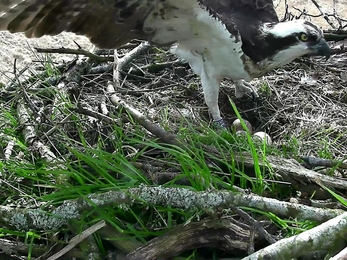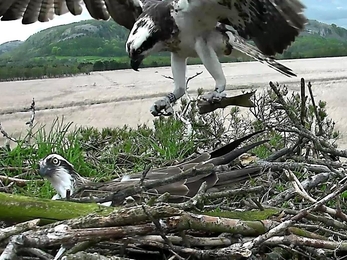HD footage of some of the Foulshaw Moss osprey viewpoint nest webcam highlights from the past 2 weeks.
#FoulshawOspreys
The grass has been growing taller, & the ospreys have been making the nest sides taller, presumably as a buffer against the freezing wind and driving rain we have had all month.
At the end of the video you will see we have had to change the camera angle, as the ospreys have been slowly building themselves out of shot. The new picture also shows the dead tree where the male often roosts, so keep an eye out for him.



